Steak 101: Everything You Need to Know about Cooking Steak at Home
Want to enjoy steakhouse-quality steak at home? Buckle up, because we’re talking about everything you need to know about steak. This guide includes information about different steak cuts, the best ways to cook them, recommended side dishes and more.

Steak 101
I love a good steak.
So much so that when I was pregnant with our second child, I requested a rare steak shortly after she arrived. (Unsurprisingly, I was VERY sad to have to eat well done steak throughout my pregnancy.)
In fact, steak is my go-to protein for a fancy-feeling meal for this reason. It’s easy to make in a batch on the grill for a crowd, and it’s utterly delicious to make for a cozy date night at home.
The best part is, it’s not particularly challenging to make once you know how to do it.
And I’m here to break that down for you because I didn’t always feel confident in my ability to cook steak at home.
Why this is important:
Cooking steak at home can feel intimidating, especially when you purchase a nice cut of meat.
You want to do it correctly to do justice to the meat that you’ve purchased from your butcher…
I want to provide you with some basic details about steak, the best cuts, as well as how to cook them whenever you want to make them at home.
So whether you’re hosting a party and firing up the grill or simply want to make yourself and your loved ones a great steak at home, this guide was written with you in mind.
Let’s dive in…

Steak Basics
So what is a steak? Simply put, it’s a cut of meat.
The steaks we’re talking about in this post are a cut of beef. But you can purchase pork steaks, lamb steaks, tuna steaks, etc.
It’s extremely important to purchase a high-quality steak for the BEST possible flavor.
Also, the recipe you’re making will also determine how high-quality the meat needs to be. (After all, fajita meat is a little different than a pan seared steak.)
Things to consider when purchasing steaks:
Depending on what you’re cooking and your budget, there are a few things you should consider as you are looking at steaks from the meat counter or your butcher shop:
- Marbling — this is the fat running through the meat. It looks like thin white ribbons, and the thinner and the more abundant they are, the more flavor you’re bound to get. Some cuts have more marbling and fat content, like ribeyes, while others have very little. Fat is flavor, so I always look for meat with nice marbling.
- Dry aging — some beef is dry aged, which means the meat it is cut into steaks, then left in a temperature-controlled environment for a period of time. This could be as little as a few weeks or as long as several months. It’s a common technique found in restaurant. This process helps natural enzymes in the meat break down connective tissue, which can make meat tough. This process makes for more tender steak and also adds depth of flavor. It is a method that is oftentimes used in restaurants. If you want to learn more about dry aging, check out this post from Rafter W Ranch.
- Grade — the USDA has a grading system for steaks. USDA Prime is the highest quality of beef there is with plenty of marbling. USDA Choice is a small step down with a little less marbling. USDA Select is another step down. While all these are good, the grade of the steak matters more when the steak is being served by itself, as opposed to a component of a dish.
More things you might discover in the grocery are meat from different types of cattle, which include wagyu and kobe beef. Wagyu is a Japaneses breed of cattle that are widely known for their tender meat and beautiful marbeling. It is the most expensive beef in the world. Kobe is a variety of wagyu.
You will also come across grass fed and grass finished steaks. Grass finished cattle eat a vegetarian diet and then are let out to pasture to graze on grass before slaughter. Cattle that are 100% grass fed and grass finished live in a pasture and eating grasses, legumes and range forage for the duration of their lives. Read the labels closely because the distinction can matter.
Grass fed and finished beef is typically learner than traditional beef. It also cooks more quickly.
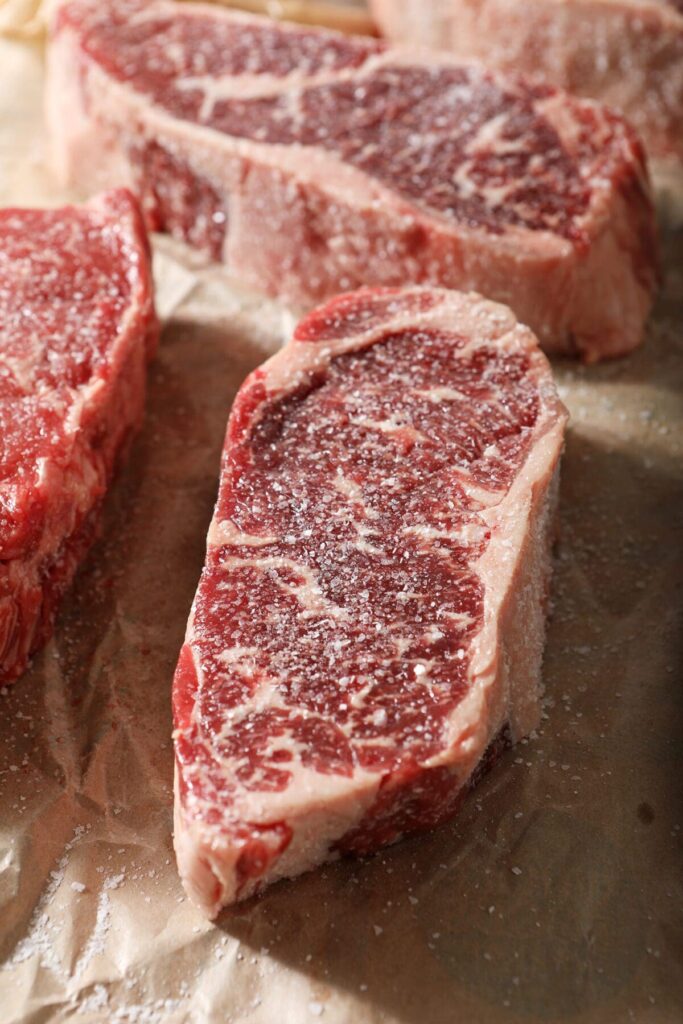
The Best Cuts of Steak
Now, let’s get real: Steak lovers tend to have their favorite cuts and tend to purchase or order these regularly based on their personal preferences.
However, there are several popular cuts of steaks, and they’re all from different primal cuts of the cow. Many have their own robust flavors while some have milder, less forward flavors.
In my opinion, thicker cuts of steak are a better investment than thinner, cheaper cuts. If we’re going to be making steak, I want it to be the best qualify imaginable.
Also, if you’re purchasing multiple steaks to cook at the same time, it’s important for the individual steaks to be similarly sized so they cook in the same amount of time.
Primal vs. prime cuts
Primal cuts are the large sections of meat that come off the animal. Beef is broken down into primal cuts by butchers, which are then broken down into sub-primal and portion cuts. These are steaks, as well as other cuts of beef, like ground beef, roasts, etc.
Prime steaks are high-quality steaks that you can purchase at steakhouses or the grocery store. As stated above, USDA Prime is the highest quality meat available at the store.
These are some of the most popular cuts of steak on the market:
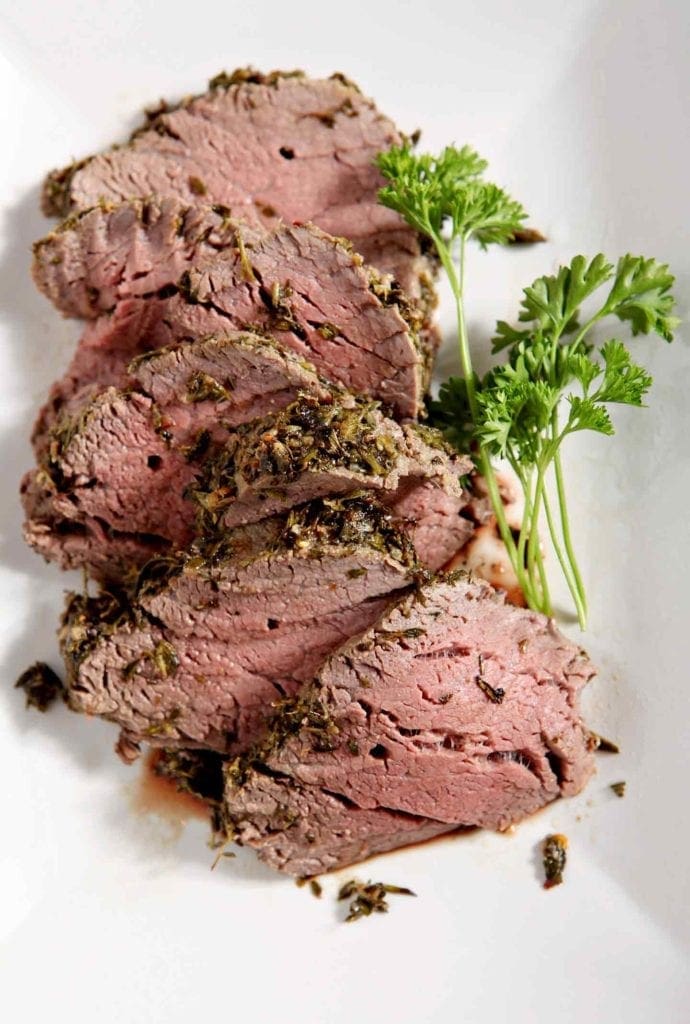
- Tenderloin — this tender cut of meat is leaner and has very little marbling, but it’s so butter soft that it melts in your mouth when cooked correctly. It is a boneless cut of beef. We like to cook this low and slow in the oven, but it can be pan seared or grilled. Filet mignon comes from the most tender part of the tenderloin.
- Filet mignon — as stated above, this comes from the most tender part of the tenderloin. This was the steak my family made when I was a kid. It’s tender and extremely lean, so there is no marbling here. It has a beautiful buttery texture and delicate flavor. This cut is best grilled, broiled or pan seared.

- Ribeye steak — the rib eye is a flavorful cut known for beautiful marbling and bold, beefy flavor. Ribeyes are best cooked over high heat, like grilling or pan searing. A cowboy steak is a type of bone-in ribeye that’s larger than the typical (boneless) ones you see. A tomahawk steak is a bone-in ribeye that has a longer bone that has been French trimmed. (A technique that’s traditionally used on racks of lamb.) Cowboy and tomawhawk steaks are huge.
- T-bone steak — the T-bone steak of two cuts: the tenderloin (filet mignon) and the strip steak. It offers a combination of tenderness and flavor. This bone-in cut of steak is best cooked on the grill or under the broiler. It gets its name from the T-shaped bone that it is served with.
- Porterhouse steak — similar to the T-bone, the porterhouse also includes part of the tenderloin and strip steak. It’s larger in size and offers a generous portion of both cuts. It’s also bone-in. The cooking methods for porterhouse are the same as for T-bone steak.

- New York strip steak — it’s also known as a strip steak or sirloin steak. It’s got light marbling and oftentimes has a piece of fat along one side. This steak is great for grilling, broiling, or pan-searing.
- Top sirloin steak — this is less marbled than a NY strip or a ribeye and is firmer, comparatively. Since it’s a tougher cut of meat, consider a marinade. This steak is great for grilling, broiling, or pan-searing.
- Flank steak — this steak is lean and flavorful. It’s got wonderful beefy flavor. Unlike some of the steaks above, this has a chewier texture. It’s best cooked quickly over high heat. (Grilling and pan searing are both great.) Slice against the grain for tenderness. Otherwise, eating this will be a chore.
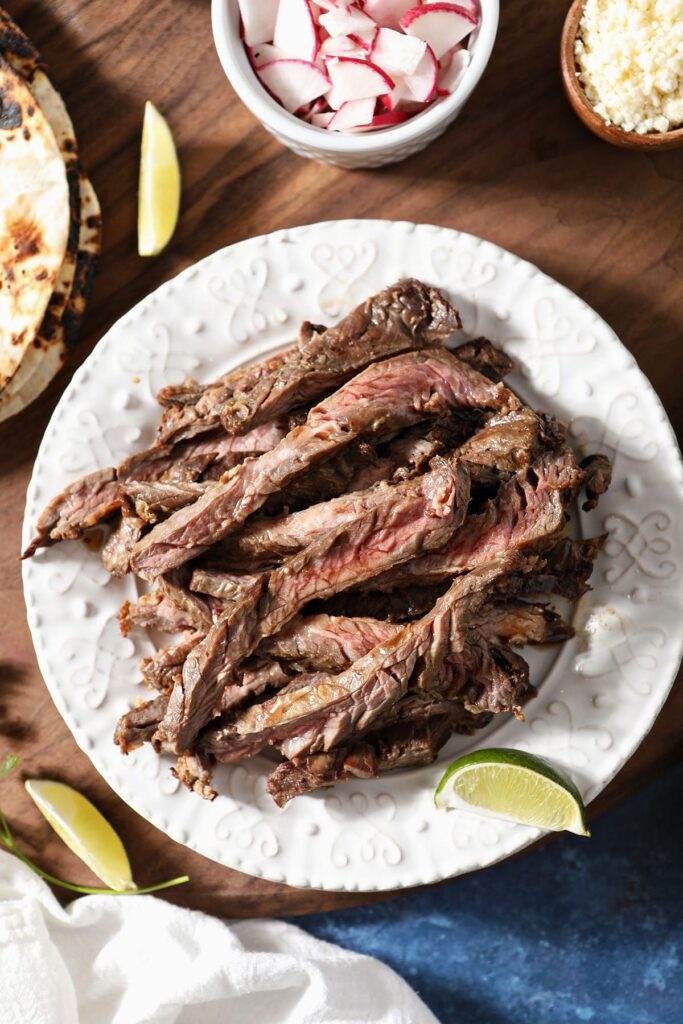
- Skirt steak — similar to the flank steak, the skirt steak has a bold beefy flavor and a coarse texture. It’s best cooked quickly over high heat. (Grilling and pan searing are both great.) Slice against the grain for tenderness.
- Hanger steak — this is similar to a flank or skirt steak, but unlike them, it’s incredibly tender. Flavorful and beefy, this cut of steak is best cooked quickly over high heat. (Again, grilling and pan searing work great.)
- Flat iron steak — this is a relatively tender and marbled cut of steak that has rich, beefy flavor and a fine texture. It’s a versatile cut of meat and can be grilled, broiled or seared.
- Flap steak — it’s also known as a bavette steak. It’s long and flat and incredibly flavorful. Cook this steak quickly over high heat.
- Picanha — this is Brazil’s favorite cut of steak. It’s sometimes called a culotte steak. In the U.S., you could see it labeled as a rump cap or a sirloin cap. It has the most gorgeous fat cap that will melt in your mouth. This cut has meaty, beefy flavor and is best grilled so that the fat cap can melt into the meat. (Learn more about the picanha steak from Brazilian Kitchen Abroad.)
Since these cuts of beef come from different areas of the animal, they require different cooking methods. Some might be thicker or thinner than others, so that plays a role in how they are cooked, too.
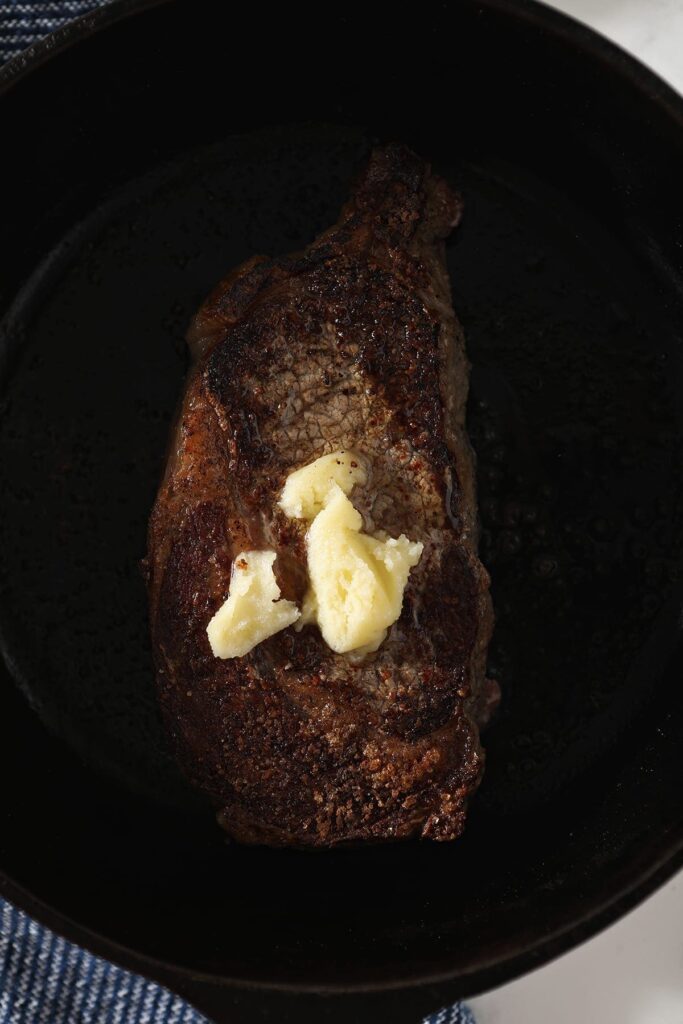
How to Cook Steak at Home
Choose the cooking method:
This is going to be dependent on the steak you have at your home and your personal preference.
The best way to cook a flank steak is different than the method you’d want to use on a filet mignon.
The cut of meat makes a difference in the cooking method, as does the thickness of the meat itself. A thicker cut needs more time to cook through than a thin cut steak.
(And quite frankly, people can find cheaper options of steaks, but they’ll be butchered thin… and that’s not worth it to me.)
A few of our favorite methods for cooking various steaks are grilling, pan searing (in a cast-iron skillet) and broiling.
How to flavor steak
Steak marinade: yay or nay?
Again, this is dependent on the meat itself. You wouldn’t slather a steak cut like a filet mignon in marinade, but it’s common to use them for the thinner, tougher cuts of steak, like flank or skirt.
How to season steak
When cooking steak at home, it’s important to season it and season it WELL. Seasoning brings out the best flavor in red meat, especially a big juicy steak.
First, you should salt your steak generously. Let it rest in the fridge before for 45 minutes or up to 24 hours before you cook it.
Salt tenderizes the meat, but also strengthens the aroma and balances out other flavors. The longer it sits with the salt, the more flavorful the steak will be.
The salt draws out liquid from the meat, then reabsorbs to make a juicy, flavorful steak. You’ll need a lot more salt than you think — so don’t be afraid to use it!
In addition to salt, you’ll also want to season your steak well before you cook it. Salt and pepper (yes, more salt!) are a great start. A dry steak seasoning blend brings more flavor to every bite.
Sprinkle on the spices and rub them in, then place the steak on a plate to rest for 30-45 minutes. When you cook the steak, the seasoning will sear into the outer crust.
Another way to flavor steaks is to use a compound butter like garlic herb butter or rosemary garlic herb butter.
What to do before cooking steak:
Set the steak out at room temperature about 30-45 minutes before you plan to cook it. This promotes even cooking.
Season it, too, as discussed above!
For best results, make sure you have a digital meat thermometer to keep an eye on the steak’s internal temperature so it is cooked to your personal preference.

A QUICK GUIDE TO
Steak Temperature
When you’re cooking steaks, you need to know the end temperature you’re aiming for so you cook it correctly. (Personally, I like my steak medium rare, but you do you!)
Pro tip: Your steak will continue cooking after it has been removed from the heat. Remove it from the heat when it is within 5-10 degrees of your ideal temperature.
Here are the temperatures:
Also, use an instant read meat thermometer* (affiliate link) to confirm the temperature.
Go in depth about the perfect temp and learn more at my Steak Temperature Guide!
Our favorite steak recipes:
How to Broil Steak
Ever wanted to learn how to make a fancy steak dinner at home without a grill? All you need is a few simple ingredients and tools to learn how to broil steak in the oven. It’s easier than you think and makes for a delicious meal, whether you’re having at-home date night or hosting friends. Makes 1 steak (with the option to add more.)
Cast Iron Ribeye
Want a steakhouse experience without leaving your house? Learning how to cook a cast iron ribeye (or your favorite cut of steak!) is easier than you think. Plus, cast iron steak makes a delicious centerpiece for any meal.
How to Grill Steak
Grilled Steaks are the perfect protein for any occasion! All you need are a few simple ingredients and tools, as well as a little time to make the best grilled steak. Come learn how to grill steak at home for any occasion.
Mediterranean Herb Crusted Beef Tenderloin
Mediterranean Herb Crusted Beef Tenderloin makes an elegant centerpiece for any holiday meal! This beef tenderloin recipe features a mixture of fresh herbs, lemon juice, olive oil, garlic and spices on the meat and is baked until tender. This herby Beef Tenderloin makes a stunning centerpiece for Easter, Thanksgiving, Christmas, birthday dinners and more!
Garlic Butter Steak
This Garlic Butter Steak is melt-in-your-mouth delicious. Seared steak is brought to another level with homemade garlic herb butter. Whether you serve this quick steak recipe for an at-home date night or sear several for the family, it makes for a decadent meal for any occasion!
Easy Steak Salad with Orange Vinaigrette
Looking for an entree or appetizer to wow the crowd? Steak Salad with Orange Vinaigrette is the way to go! This Whole30-compliant, Paleo and Gluten Free recipe will impress guests and family alike. Perfectly cooked New York Strip Steak sits atop a bed of romaine lettuce, studded with navel oranges, English cucumbers and avocado. Finish with a drizzle of homemade Orange Vinaigrette, and this salad is the perfect summer meal!
Skirt Steak Tacos
Skirt Steak Tacos are the BEST dinner to make! Made with marinated skirt steak for tacos and served with your favorite taco toppings, these Skirt Steak Tacos are great for a weeknight meal or feeding a crowd.
Steak Alfredo
Steak Alfredo is an elevated version of the best comfort food. A homemade garlicky Alfredo sauce pairs beautifully with steak. This pasta recipe feels fancy, but it’s actually very simple to make and ready in less than 30 minutes.
Side dishes to serve alongside steak
We love to serve vegetables and other sides with our steaks at home.
Here are a few options that are good:
- Homemade Mashed Potatoes or Roasted Garlic Mashed Potatoes
- Spinach Madeline
- Vegetarian Twice Baked Potatoes
- Honey Roasted Carrots
- Vegan Green Beans with Toasted Pine Nuts
Grab some more sides from our Best Side Dishes to Serve with Steak!
So now you that you know all the things there are to know about cooking steak at home, you should take some time to experiment!
Try out different cuts of steak and experiment with different cooking methods. Find YOUR favorite preparation.

About the Author:
Erin Parker is a Southern gal living in Texas with her husband and two daughters. She started The Speckled Palate to share what she was cooking as a newlywed… and over the years, it’s evolved to capture her love for hosting. Specifically, the EASIEST, lowest key entertaining because everyone deserves to see their people and connect over good food. Learn more about her…

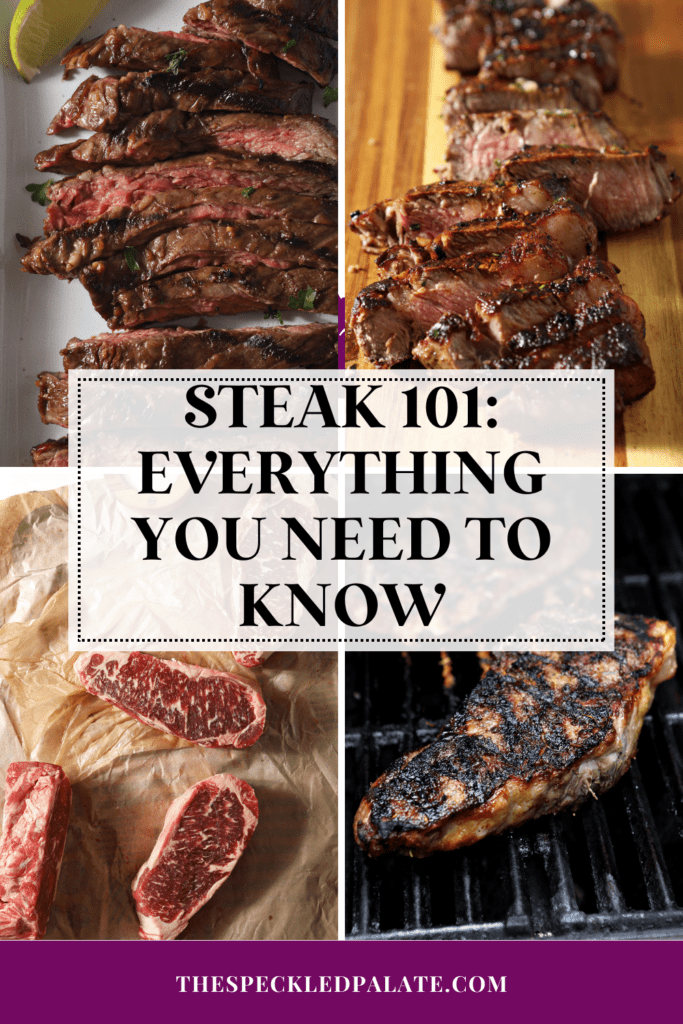
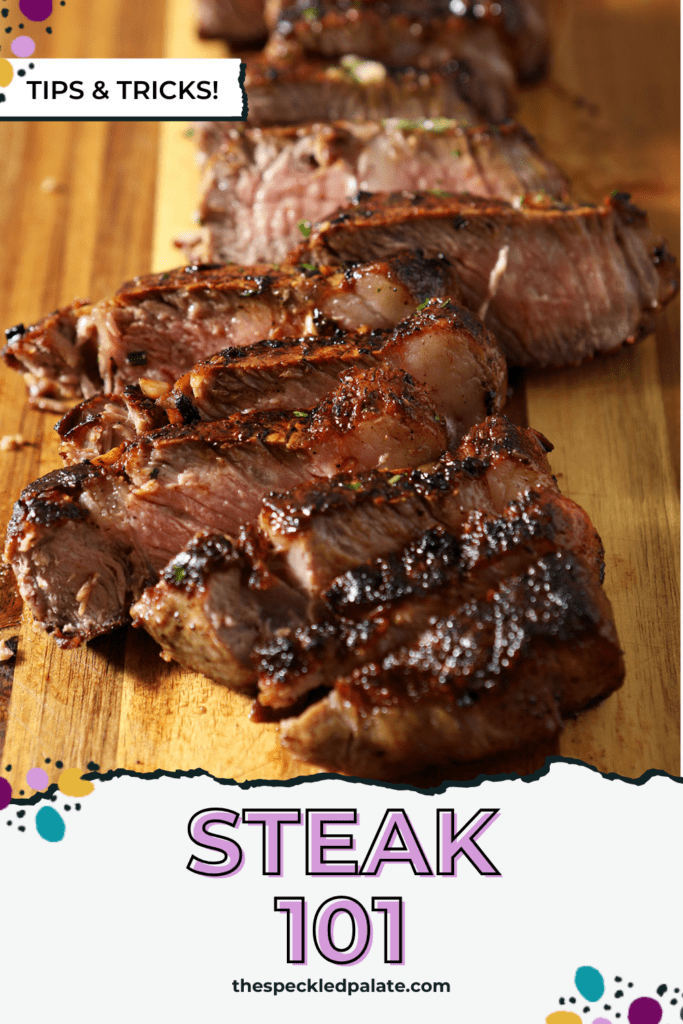
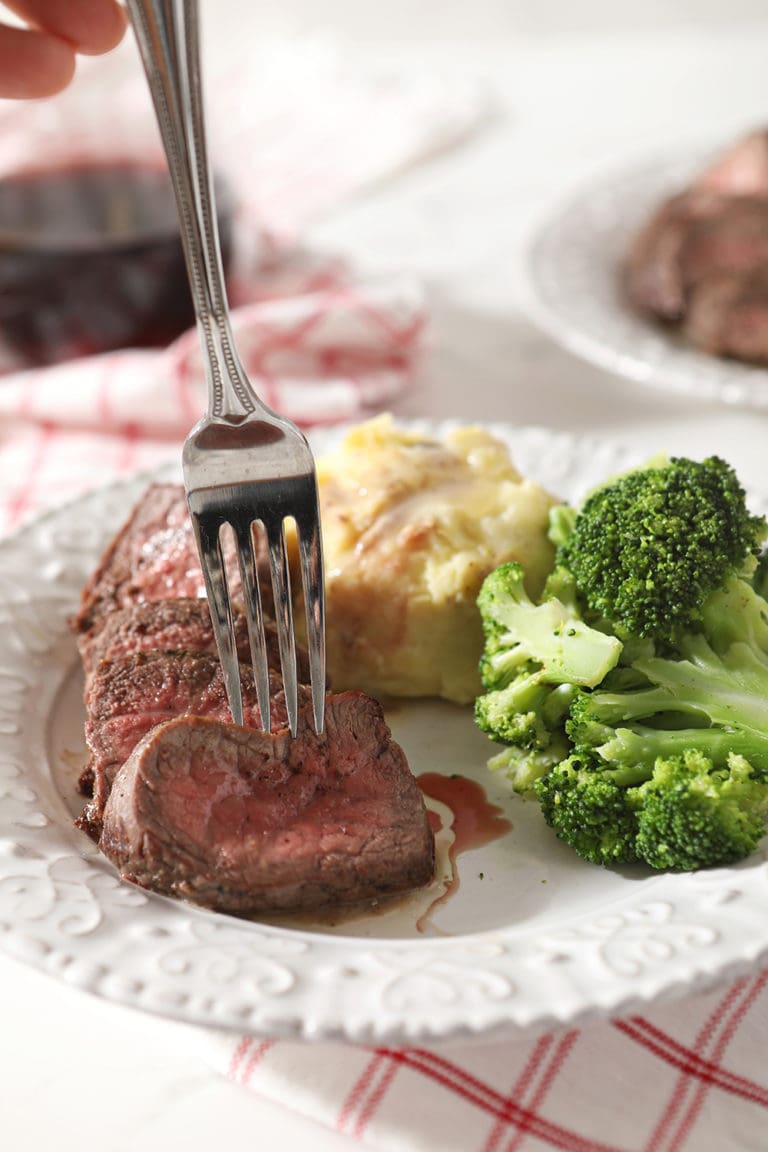



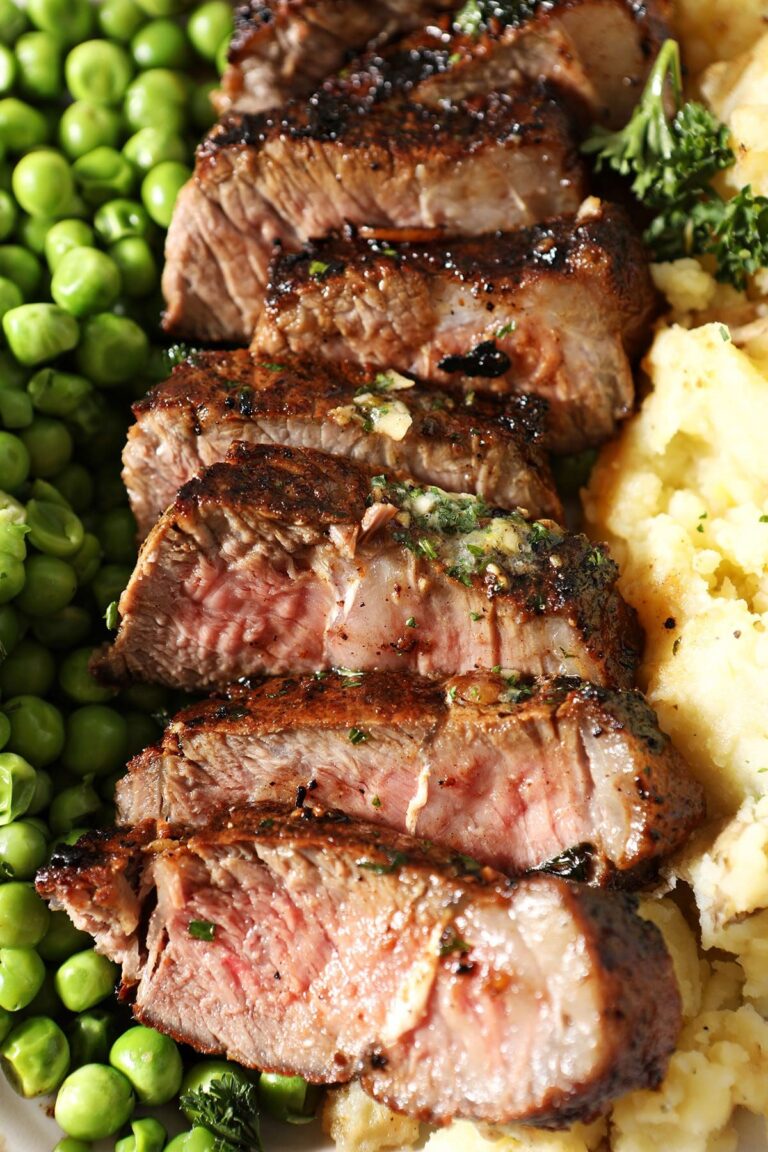
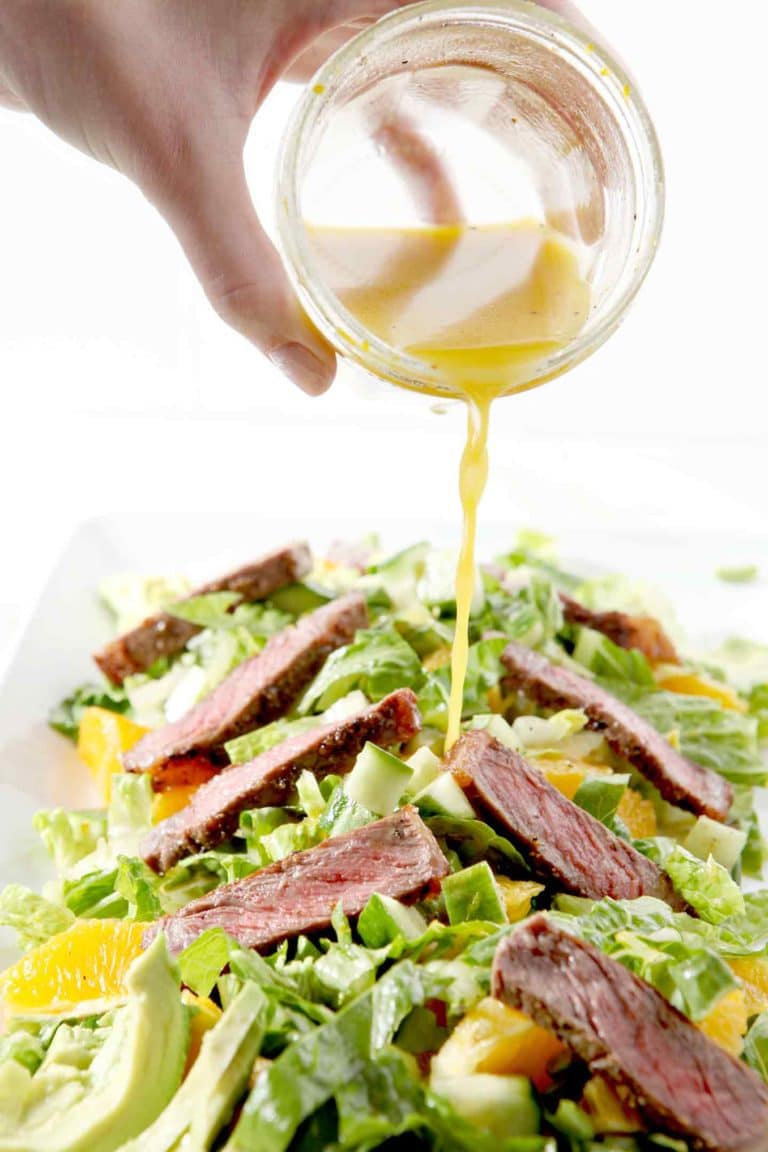
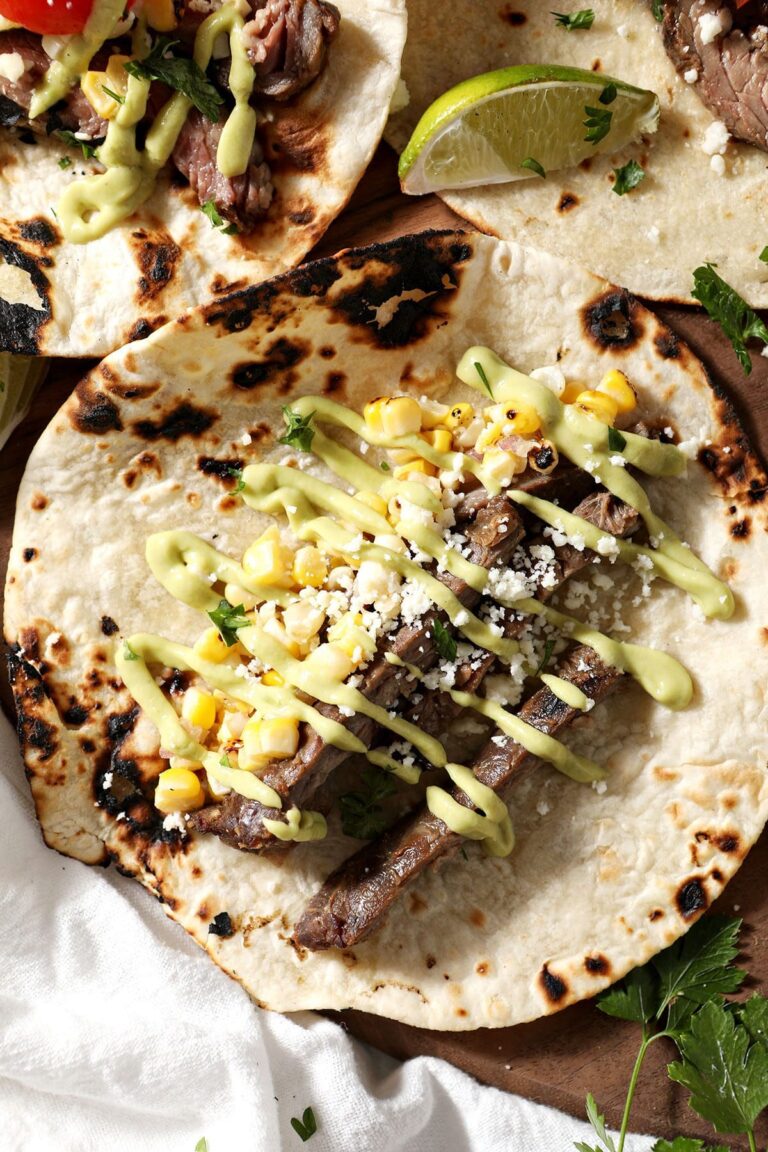
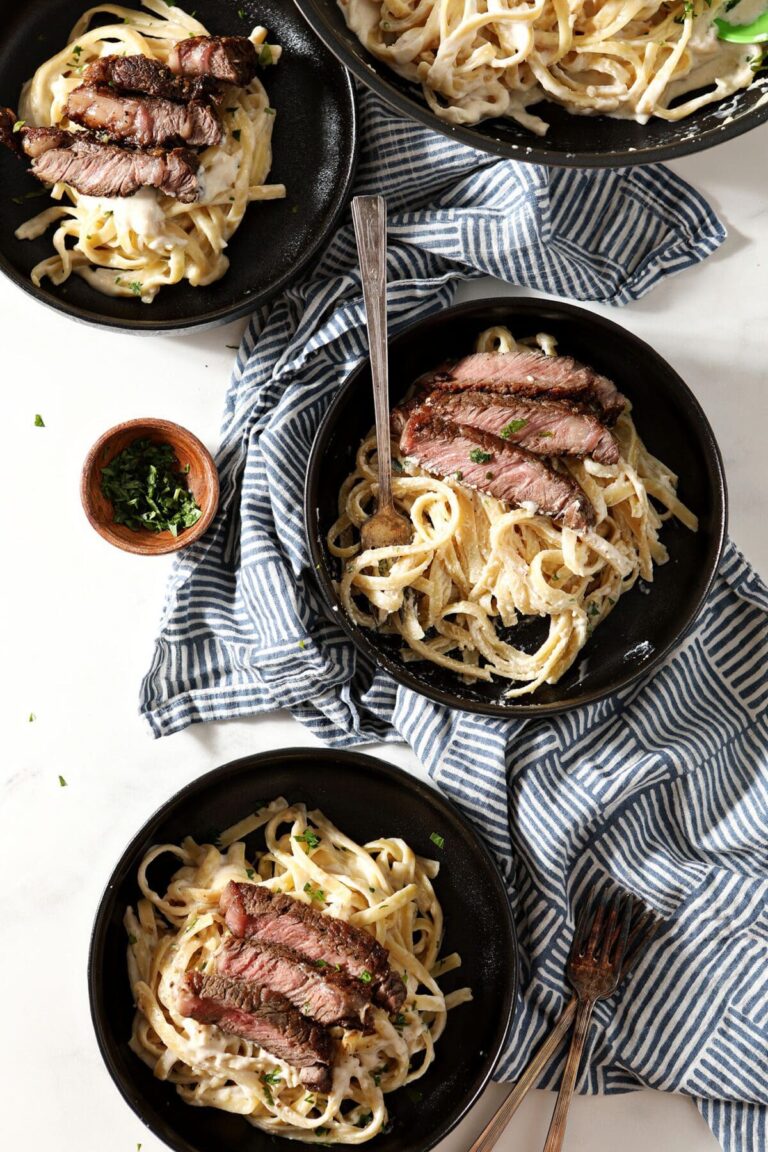






Before leaving a comment or rating, ask yourself: